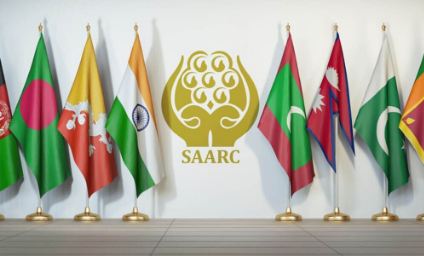The South Asian Association for Regional Cooperation (SAARC) was envisioned as a platform for regional integration, economic collaboration, and diplomatic engagement among South Asian nations. However, its effectiveness has been repeatedly undermined by geopolitical tensions, particularly between India and Pakistan. As the two nuclear-armed neighbors continue to grapple with longstanding disputes, the future of SAARC remains uncertain.
SAARC has been largely inactive for the past decade, with no summit held since 2014. The organization has struggled to function due to deep-rooted political conflicts, particularly between India and Pakistan. The cancellation of the 2016 Islamabad summit following the Uri attack exemplifies how bilateral tensions have paralyzed the regional body1. While other member states have expressed interest in reviving SAARC, the India-Pakistan rivalry remains the primary obstacle.
India has increasingly prioritized alternative regional frameworks such as BIMSTEC (Bay of Bengal Initiative for Multi-Sectoral Technical and Economic Cooperation) over SAARC. New Delhi views SAARC as ineffective due to Pakistan’s involvement, preferring to engage with South Asian nations through bilateral and sub-regional initiatives. This shift has further diminished SAARC’s relevance and raised questions about its future viability.
Despite India’s reluctance, Pakistan continues to advocate for SAARC’s revival, emphasizing its potential for economic cooperation and conflict resolution. Islamabad argues that SAARC remains the only platform that brings together all South Asian nations, making it indispensable for regional stability. However, without India’s participation, SAARC’s ability to function effectively remains doubtful.
The recent escalation in India-Pakistan tensions, particularly following the Pahalgam attack, has further complicated SAARC’s prospects. India has accused Pakistan of harboring terrorist elements, while Pakistan has called for an impartial investigation2. These hostilities make diplomatic engagement within SAARC increasingly difficult, as mutual distrust prevents meaningful cooperation.
For SAARC to regain relevance, both India and Pakistan must recognize the benefits of regional collaboration. Economic integration, trade facilitation, and joint efforts to combat climate change could serve as common ground for engagement. Additionally, backchannel diplomacy and third-party mediation may help ease tensions, creating space for SAARC’s revival.
The future of SAARC remains precarious, largely dependent on the trajectory of India-Pakistan relations. While Pakistan continues to push for its revival, India’s strategic shift away from SAARC suggests that the organization may remain dormant. Unless both nations find a way to reconcile their differences, SAARC risks becoming an obsolete entity, overshadowed by alternative regional alliances.

















